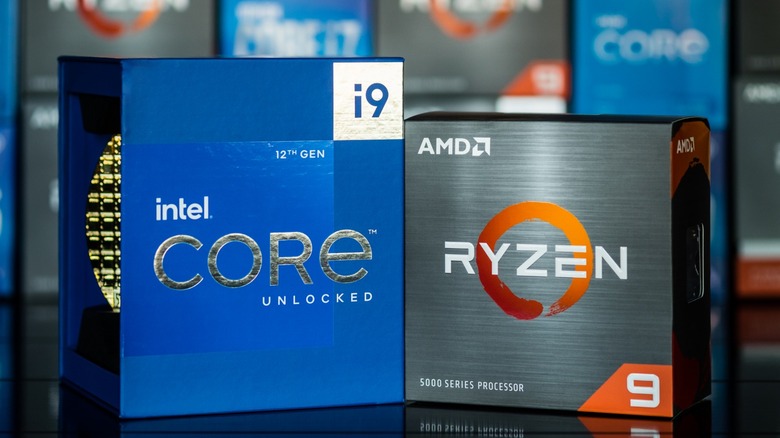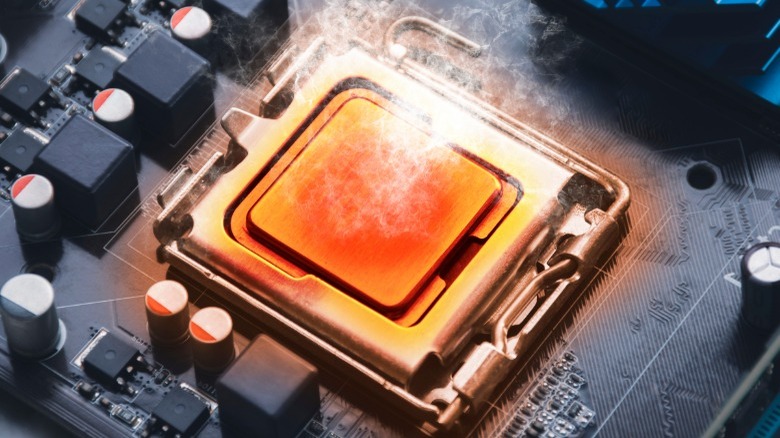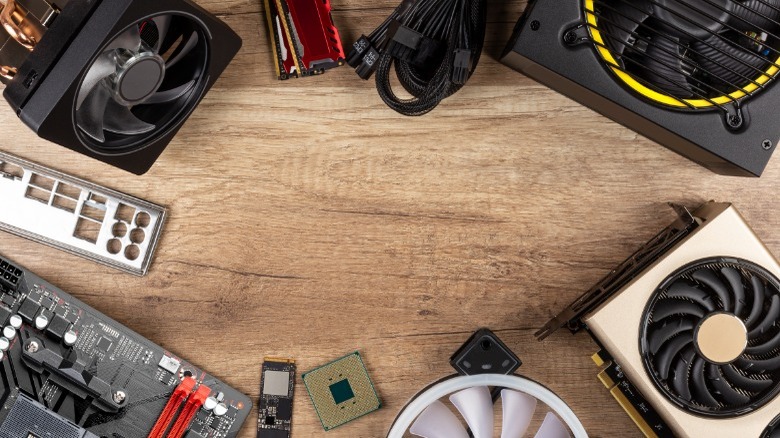How To Check Your Windows Computer's CPU Temperature
One of the first things you get to learn about computers is that any amount of processing produces some amount of heat as a byproduct. It's not unusual for even a well-cooled computer processor to idle at 40°C, but when things get serious, you'll quickly see temperatures climb as a result of the increased CPU workload demanding more power and more voltage. A sharp increase in CPU temperature is usually marked by the fan speed ramping up, which can cause an annoying whine.
While it's normal for CPUs to get hot and for your computer to respond by increasing fan speed, frequent CPU temperature spikes can be indicative of more serious issues with your computer. If temperatures get too high, it can impact the performance, and in some cases the longevity of your hardware. As such, it's a good idea to check in on your CPU temps every once in a while to avoid potentially risking your hardware.
How to check CPU temperature on Windows
Both AMD and Intel CPUs report their temperature via sensors on the CPU die. While Windows lets you see GPU temperature and a host of other performance metrics via the built-in task manager, you will need a third-party tool to measure your CPU temperature. One highly regarded system monitoring tool is HWiNFO64, which is available for free via hwinfo.com. To use HWiNFO64 to monitor your CPU temperature, simply download and install the program then follow these steps:
- After installation is complete, check the option to launch HWiNFO64, then click "Finish."
- In the HWiNFO64 launch window, check "sensors-only" and then click "Run," to open the sensors window of the app.
- In the HWiNFO64 sensors window, you will see a section dedicated to CPU temperature.
There are a number of temperature readouts available in HWiNFO64, depending on which CPU brand and platform you are using, and monitoring the wrong CPU temperature could mean you're wasting your time.
What is a safe CPU temperature?
CPU temperature is measured in degrees Celsius, and different manufacturers rate their CPUs for different temperatures. While Intel generally limits its CPUs to a ceiling, or junction temperature (TjMax) of between 100 and 105 degrees, AMD has stated that its Ryzen 7000 CPUs are designed for a lifetime of use at the limit of 95 degrees. In HWiNFO64, the CPU temperature can be reported on a per-core basis, but you should only be concerned for your CPU once the average CPU core temperature reaches your processor's maximum junction temperature.
Modern CPUs truly are technological marvels, and there is generally far more going on under the hood than it might seem, especially where clock speed is concerned. AMD and Intel do things slightly differently, but in general, CPU clock speeds are determined using algorithms that take into account a number of variables, including power and thermal headroom. What this means is that if your CPU is cool, it's able to achieve a higher clock speed and better performance. If it's running abnormally warm — because you have a cat sitting on top of the exhaust vent on your PC, for example — the CPU will limit the clock speed to stay within safe thermal limits. Eventually, if thermals get completely out of control, the CPU will hit a kill switch and trigger a thermal shutdown.
What to do if CPU temperatures are too high?
If you think your CPU is getting too hot, there are a number of fixes you can try. First, make sure that your computer is not in an area where it's going to trap its own heat or absorb heat from the environment. This could mean moving your desktop out of a sunny spot to make sure that it has access to fresh, cool air, and that it can expel the hot air properly. In the case of a laptop, increasing ventilation can be as simple as putting it on a hard surface instead of a blanket or your lap, where the fabric could be blocking the fan intake.
Your second port-of-call for an overheating CPU should be to visually inspect the fans and intake filters. First, double-check that all the fans are properly connected to the motherboard. When your CPU is under load, check that the fans are spinning. Some PC fans have a mean time to failure rating (MTTF or MTBF), or life expectancy, of as much as 490,000 hours. After the MTTF has elapsed, failures become more frequent. If you notice dirty fans or filers, use a clean paintbrush or canned air to clean your system and check the temperatures again.
If cleaning your system didn't work, it may be time to replace your thermal paste. In the case of a water cooling system, verify that the pump is still working and replace any necessary components.


